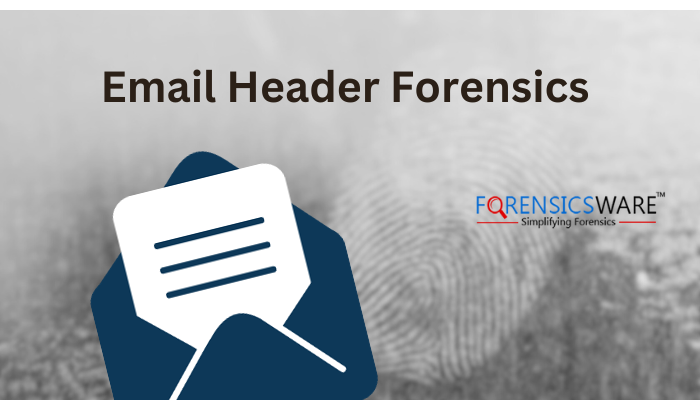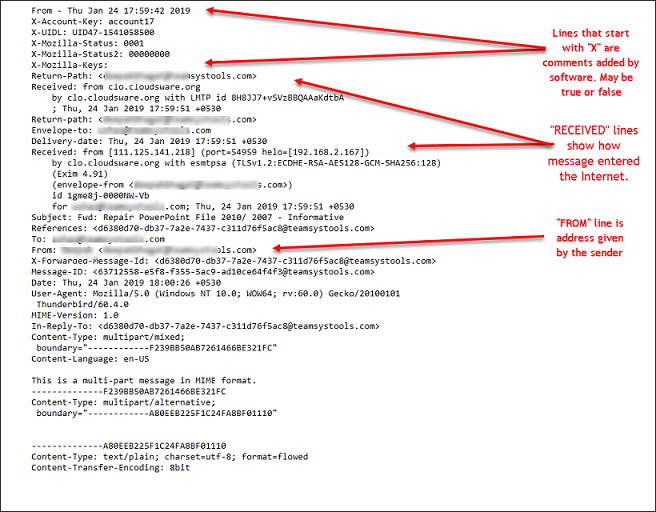Technology | 6 Minutes Reading
Importance of Email Header Forensics While Investigating Email ID Message

Email header plays a very crucial role in digital forensics. It provides valuable information about the message ID, transmission of the message, and history of an email to investigators. That further helps them trace the criminal, carve out the evidence, etc to solve the case. But, the question is how to do email header forensics. Let’s take a deep dive into every aspect of analyzing the email headers.
Before knowing how to perform the forensics analysis, let’s first understand what email message header means.
What is Email Header Forensics?
It is nothing but examining and analyzing the header information in an email message. In other words, it is the process of examining the email metadata. By this, investigators can get a wealth of information about the source, transmission path, etc.
The email header contains different components that need to be examined to extract evidence. The components are as follows.
- Return-Path: The email address that errors and bounces are sent to.
- Received: This part gives you a history of the email’s travels through several mail servers. Time stamps, hostnames, and IP addresses of the servers are listed.
- From: The sender’s email address.
- To: The recipient’s email address.
- Subject: The subject line of the email.
- Message ID: A distinct email message identifier.
- MIME-Version: Details regarding the format of the email.
- Content-Type: explains the kind of content that is included in the email.
- X-Originating-IP: This field may contain the IP address of the sender in certain email systems.

Know the Main Attributes of Email Header Analysis
There are some key aspects of email header forensics that help investigators solve a complex case. Let’s briefly discuss them one by one.
- Metadata Analysis – Through this, the digital forensic experts analyze the metadata and perform email message ID forensics to gather important clues about the email origin.
- Tracing the Source – By tracing the email source, investigators can reveal the IP address of the originating server or device.
- Transmission Path – A list of the servers and routers that an email travels through on its way from the sender to the recipient is chronologically recorded in the “Received” headers. You can track the path an email took and find any intermediary relays with this information.
- Time Stamps – Email header forensics helps email examiners analyze one of the important components of an email header i.e. the time stamp. Through this, they can track unusual activities that happened between the email sent and received duration.
- Legal Evidence – The information collected from the email header can be presented as evidence in the court to support or refute claims.
How to Execute Email Header Forensics? Know the General Procedure
As per the case demand, the investigators perform the email forensic investigation. However, here are the standard steps that most forensics experts follow.
Step 1. Access the Email Header: Open the email in question and view the email header
Step 2. Examine the Header: Look for key information in the header.
Step 3. Analyze the Received Header: Pay close attention to the “Received” header to find the trail of the email’s entire path.
Step 4. Trace IP Addresses: Through email header forensics, examine the IP addresses to find out whether any proxy servers or relays were used in the email’s transmission.
Step 5. Verify Authenticity: Check for signs of email spoofing, and other inconsistencies and verify the email’s legitimacy.
Step 6. Preserve Evidence: In digital forensics, if an email header is a part of a legal investigation, then it’s a necessary step to preserve the evidence in a secure and tamper-proof manner.
A Tried & Tested Solution for Email Header Forensics
The forensics investigation of email headers can be a complex task. It may require advanced tools and digital forensic expertise to draw meaningful conclusions. Especially, if you have the right tool, it’ll be a great support in your investigation. One such tool is MailXaminer. It is widely trusted by forensics analysts and law enforcement agencies across the globe.
The software has immense capabilities and benefits. From case management to evidence analysis, everything can be done in one place.
- Case Management – If you have more than one case in hand, then with the help of the tool you can manage all of them in one place without any confusion.
- Supports 20+ file Formats – Since it allows different file formats such as MBOX, PST, image files, etc; it gives you the flexibility to import files from different email platforms.
- Offers Multiple Search Options – With a diverse range of search options such as Proximity Search, General Search, Fuzzy Search, etc, you can handle a huge volume of data.
- Filter Options – The software provides different filter options which makes the email header forensics much easier. With this, you can narrow down your searches, and reach the desired result.
- Powerful Analysis – It provides in-built link analysis and timeline analysis features which will help you to interpret data more accurately.
- OCR capabilities – You can also easily analyze keywords present in image files and attachments.
- Different Export Options – Once you are done examining the case, you can export the result in the desired format.
Conclusion
For any case that involves email investigation, analysts usually prefer to perform email header forensics. They start analyzing the email headers to gather relevant evidence that can help them close the case. To successfully examine the email, they use various techniques and tools. And, what could be the best option other than using a professional tool to make the overall investigation faster and more accurate? That’s why, in this write-up, we provided the best software that analyzes email headers more easily.
FAQs
Q. What information can be found in an email header?
Typically email headers contain sender and recipient email addresses, server routing information, message IDs, timestamps, etc.
Q. How to view the email header?
Most email clients allow users to view the header information by exploring the email properties. However, for in-depth forensics of email headers, one needs to use professional software.
Q. Can email headers be forged?
Technically, it’s possible to forge an email header. However, nowadays modern email systems employ strict security measures which helps in identifying whether the header is forged or not.
Q. What is a message ID in an email header?
A unique identity is assigned to each email message and that can be identified by message ID. Thus, by doing message ID forensics, one can track specific email communication.
Q. Can message IDs be manipulated?
Hackers are getting advanced day by day. So, if they are highly skilled then they can manipulate message IDs.


